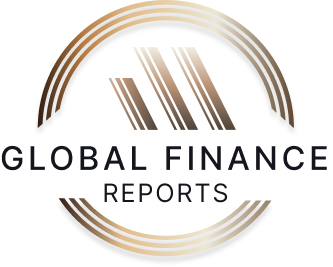Unlocking the Power of Diversification: A Smart Move for Investors in Uncertain Times
Introduction:
In today’s volatile and unpredictable economic landscape, investors are increasingly seeking ways to safeguard their portfolios against potential risks. With the ever-looming uncertainty, diversification has emerged as a powerful strategy to mitigate losses and maximize returns. This article delves into the significance of diversification and how it can help investors navigate through uncertain times.
The Importance of Diversification:
As the saying goes, Don’t put all your eggs in one basket. Diversification is the key to spreading investment risk across different asset classes, sectors, and geographical regions. By allocating investments across a variety of assets, investors can reduce the impact of any single investment’s poor performance on their overall portfolio. This strategy aims to achieve a balance between risk and reward, ensuring that investors are not overly exposed to any one particular investment.
Navigating Uncertain Times:
Uncertainty is an inherent part of the investment world, and recent events have only heightened the need for diversification. The COVID-19 pandemic, geopolitical tensions, and economic fluctuations have all contributed to an environment where traditional investment strategies may fall short. By diversifying their portfolios, investors can better weather the storm and potentially capitalize on opportunities that arise during uncertain times.
Asset Allocation:
Diversification begins with a well-thought-out asset allocation strategy. Investors should consider a mix of stocks, bonds, real estate, commodities, and alternative investments to create a diversified portfolio. Each asset class has its own risk and return characteristics, and by combining them, investors can achieve a more balanced and resilient portfolio. It is crucial to assess individual risk tolerance, investment goals, and time horizon when determining the optimal asset allocation.
Geographical Diversification:
In addition to diversifying across asset classes, investors should also consider geographical diversification. Investing solely in one country or region exposes investors to country-specific risks. By spreading investments across different countries and regions, investors can reduce the impact of localized economic downturns or political instability. This global approach allows investors to tap into various growth opportunities and potentially benefit from different market cycles.
The Role of Alternative Investments:
In uncertain times, alternative investments can play a vital role in diversifying portfolios. These investments, such as hedge funds, private equity, or real estate investment trusts (REITs), often have low correlation with traditional asset classes like stocks and bonds. Including alternative investments in a portfolio can provide additional diversification benefits and potentially enhance risk-adjusted returns.
Regular Portfolio Review:
Diversification is not a one-time event but an ongoing process. Investors should regularly review their portfolios to ensure that their asset allocation remains aligned with their investment objectives. As market conditions change, certain asset classes may outperform or underperform, necessitating rebalancing to maintain the desired diversification levels.
Conclusion:
In uncertain times, diversification is a prudent strategy that can help investors safeguard their portfolios and potentially enhance returns. By spreading investments across different asset classes and geographical regions, investors can reduce risk and capitalize on opportunities that arise during market volatility. Regular portfolio review and adjustment are essential to maintain an optimal diversification strategy. Unlocking the power of diversification is a smart move that can provide investors with peace of mind and the potential for long-term financial success.
